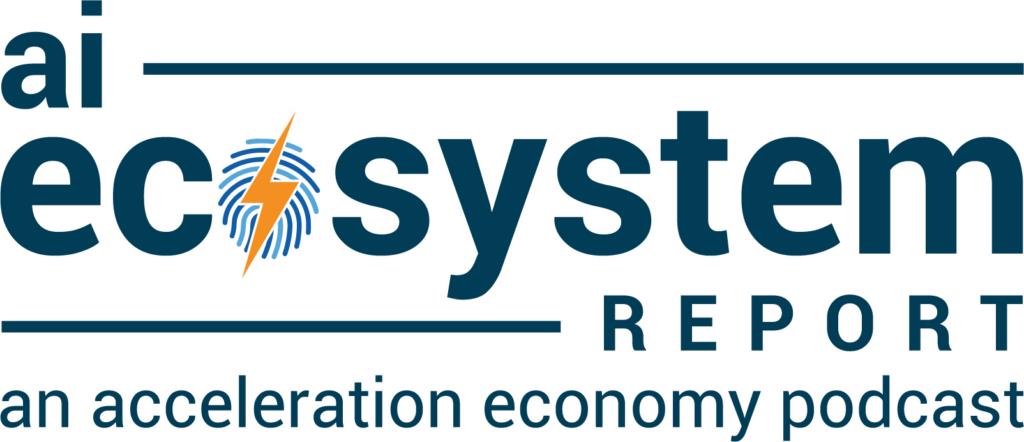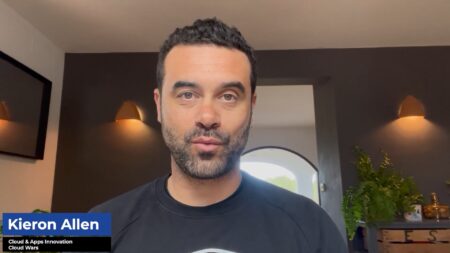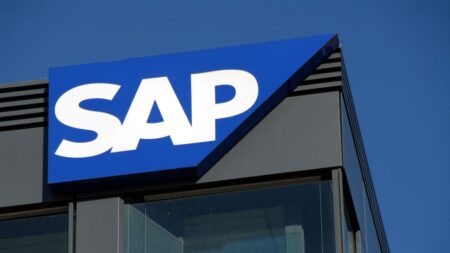Artificial intelligence, and more specifically generative artificial intelligence (GenAI), has increased the emphasis on technology cocreation as a means to help customers capitalize on the pace of innovation.
At the same time, the vendor-partner-customer ecosystem is evolving rapidly to support cocreation around GenAI, and that evolution is a core focus of the new Acceleration Economy AI Ecosystem Course.
Discover how AI has created a new ecosystem of partnerships with a fresh spirit of customer-centric cocreation and a renewed focus on reimagining what is possible. The Acceleration Economy AI Ecosystem Course is available on demand.
The course kicks off with a keynote discussion in which Cloud Wars founder Bob Evans convenes these experts to explore the evolution of cocreation and the ecosystem developing around AI:
- Erica Volini, Senior Vice President, Global Partnerships at ServiceNow
- Dave Kanter, Global Lead, Accenture ServiceNow Business Group
- Francisco Marin, Co-Founder and CEO, Cognitive Talent Solutions.
The session opens with Volini’s high-level overview of how Service Now approaches GenAI and partner relationships.
“Everyone wants to know about GenAI, and it feels like everyone is doing something with GenAI,” Volini says. “To understand the opportunity with our partners is to understand how ServiceNow is approaching GenAI, which I think is very unique.”
“We are actually building [large language models] specific to our workflows. For a ServiceNow customer, the opportunity is not just to be able to embed GenAI, but to do it in the context of the specific workflows that they are using to drive significant transformation for their customers.”
“We have a series of courses that we’ve developed to not only understand the ServiceNow GenAI functionality, but to understand the terminology, because we need our partners to really be knowledgeable to give our customers the maximum value out of GenAI,” she says.
Know, Grow, Scale
Evans asked how ServiceNow partners are helping their customers understand the ways in which GenAI can bring about transformation in their companies.
“It’s not just about deploying GenAI, it’s about really thinking through the use cases where GenAI can have that significant impact on employee productivity,” says Volini.
She describes the progression of GenAI in companies as a three-step process where organizations must first know what’s available in terms of capabilities, grow that knowledge and, finally, scale the technology in support of various use cases.
In this context, Accenture’s Kanter entered the discussion to introduce AI Lighthouse, a joint program developed by ServiceNow, Accenture, and AI chip giant NVIDIA to support ecosystem-centric GenAI development, and how some early adopters are using it to focus on vital use cases.
To frame his points, Kanter cited figures from a recent C-Suite survey carried out by his team that showed 74% of respondents intend to increase GenAI spending in 2024, up 50% from the previous year.
“Our customers are trying to understand all these available options. How do they fit into their existing enterprise architecture strategy?” Kanter says, adding, “Customers prefer to consume GenAI capabilities directly into the platforms that they already own out of the box, and they want to do that for both data security reasons, which is top of mind for everyone, but also for ongoing maintenance reasons.”
The goal of AI Lighthouse, Kanter says, is to assist a pioneering set of customers across industries with the design, development, and implementation of powerful GenAI capabilities purpose-built in the ServiceNow platform on top of ServiceNow large language models. This, explains Canter, takes full advantage of the rich data set available in ServiceNow.
Unique GenAI Solutions
Marin of Cognitive Talents — a people analytics company focusing on organizational network analysis or what it calls ONA — explained how Cognitive Talents is working with ServiceNow to develop new GenAI solutions
“[At] the beginning of this year we deployed a native ONA app in the ServiceNow store,” he says. “This is a native app within their ecosystem. And, in terms of GenAI, we have two main features that [we] will be deploying first on the ServiceNow app before our own platform.”
The first is a chat interface that allows customers to ask questions to the AI about specific areas of the ONA analysis, such as “Who are the informal leaders in the organization?”
“That’s a very important use case because our own research shows that two-thirds of high-performing employees are not recognized as informal leaders by their peers,” Marin says. “So, you can change your leadership pipeline by up to 70%.”
The second feature, currently in the testing phase, is ultimately a second iteration of the first feature where the AI can run and execute code based on prompts. “You’ll be able to ask the AI to, for example, generate executive focus on a specific use case like onboarding, change management, or leadership development,” explains Marin.
What’s the Outcome for Customers?
Evans asked ServiceNow’s Volini to circle back to customers and what all these GenAI ecosystem changes are enabling for them.
“The ability to use Now Assist in Virtual Agent and literally have that more conversational chat experience, better self-service, to be able to ask questions like Francisco’s talking about, that is a core use case,” she says.
“And if you think about it, that could be extended across the enterprise [to] where you want to have that better experience. And this is where the productivity savings start coming into play.
“The chat becomes more conversational; it becomes more proactive.”
“[The] second example Francisco gave is about what we would call flow generation, the ability to take plain text and convert it into low code workflows without development need,” she explains. “If you think about the lack of developers every organization is facing, it’s the business case for low-code, no-code development, GenAI.”
ServiceNow is accelerating that flow generation by helping customers generate workflow blueprints and accelerate new development — without being a developer.
Ultimately, ServiceNow’s comprehensive AI and GenAI efforts are creating opportunities to work more tightly with the world’s top partners.
“It accelerates the journey we’ve been on, giving our partners the ability to build solutions on our platform,” says Volini. “When they build those solutions, they’re building them with GenAI already embedded and embedded in a way that specifically optimizes our workflows.”
“That, to me, is the game changer when I talk to our partners,” she concludes.










